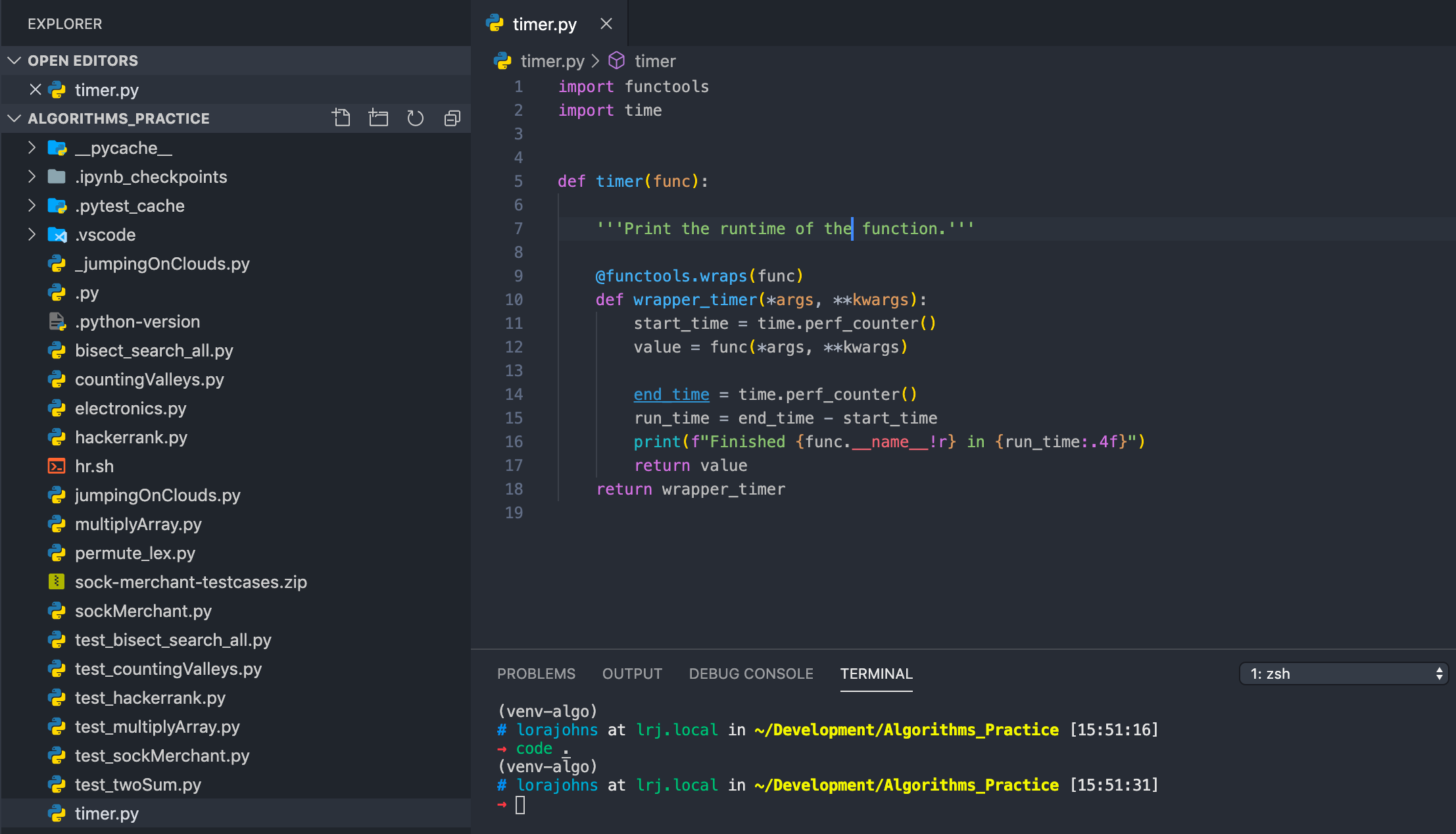Visual Studio Code Virtualenv
A lot of my colleagues run into problems with their virtual environments in Visual Studio Code. We use venv as environment manager for Python projects and sometimes it feels like VS Code really doesn’t do what we expect of it. Here’s what you need to do to change virtual environments in VS Code on a Windows machine.
- Visual Studio Code Python Virtualenv Windows
- Visual Studio Code Virtualenv
- Vscode Python Create Virtual Env
- Anaconda Vs Code
- Visual Studio Code Django Virtualenv

This video is regarding installing Virtual Environment on Windows 10 system using command prompt and vscode.Virtualenv is a tool to create isolated Python en. Set virtualenv for file in Visual Studio Code python. Ask Question Asked 2 years, 6 months ago. Active 2 years ago. Viewed 1k times 5. I'm playing with Visual Studio Code on Ubuntu. One big problem is I can't figure out how to attach a virtualenv to a file. So, I open the file. Setup python environment for writing macros with pyenv, virtualenv, visual studio code, libre office uno - libre-office-uno-python-setup.md.
You can create a new environment in Code, by running the following command (usually, I simply use “.env” as name of the environment):
If you are using PowerShell as terminal in Visual Studio Code, you’ll have to run the ps1 file.
If you are using the command prompt as terminal in VS Code, you’ll have to run the bat file.
In the bottom left corner, you can find the following icons. You should click on the Python 3.X.X and see if the active executable is pointing to the python.exe in your virtual environment folder.
If that’s not the case, you’ll be able to select it from the dropdown.
This should now be indicated in the bottom left of VS Code.
Oftentimes, this doesn’t work. It seems to happen when the virtual environment has been created outside the folder from your workspace. In this case, VS Code doesn’t pick it up automatically. Here’s what you can do to fix it.
Navigate to the settings of your Workspace.

Once you’re in this editor, you add the following lines to manually point to the python executable in your virtual environment.
Finally, if VS Code still hasn’t changed, it usually helps to close VS Code and open the folder in a new Workspace. Then go through the same steps again.
Good luck!
Say thanks, ask questions or give feedback
Technologies get updated, syntax changes and honestly… I make mistakes too. If something is incorrect, incomplete or doesn’t work, let me know in the comments below and help thousands of visitors.
Question or problem about Python programming:
I have a Python project and navigation/autocomplete work perfectly within files in the project. I want to specify a virtualenv so that navigation/autocomplete work with packages inside that virtualenv.
Visual Studio Code Python Virtualenv Windows
I tried this in settings.py, but navigation/autocomplete does not work. Also by setting “python.pythonPath”:”~/dev/venvs/proj/bin/python killed the original navigation/autocomplete.
How to solve the problem:
Solution 1:
With the latest update to the extension all you need to do is just specify the 'python.pythonPath' as follows.
The values for 'python.autoComplete.extraPaths' will be determined during runtime, but you are still free to specify custom paths in there.
Please, remember to restart Visual Studio Code once the necessary changes have been made.
Solution 2:
As of September 2016 (according to the GitHub repository documentation of the extension) you can just execute a command from within Visual Studio Code that will let you select the interpreter from an automatically generated list of known interpreters (including the one in your project’s virtual environment).
How can I use this feature?
Select the command Python: Select Workspace Interpreter(*) from the command palette (F1).
Upon selecting the above command a list of discovered interpreters will be displayed in a quick pick list.
Selecting an interpreter from this list will update the settings.json file automatically.
(*) This command has been updated to Python: Select Interpreter in the latest release of Visual Studio Code (thanks @nngeek).

Also, notice that your selected interpreter will be shown at the left side of the statusbar, e.g., Python 3.6 64-bit. This is a button you can click to trigger the Select Interpreter feature.
Solution 3:
Quite simple with the latest version of Visual Studio Code, if you have installed the official Python extension for Visual Studio Code:
Shift + Command + P
Type: Python: Select Interpreter
Choose your virtual environment.
Solution 4:
With the latest Python extension for Visual Studio Code, there is a venvPath Setting:
On Mac OS X, go to Code → Preferences → Settings and scroll down to Python Configuration.
Look for 'python.venvPath: ', and click the pencil on the left-hand side to open up your user settings. Finally, add the path to where you store your virtual environments.
If you are using virtuanenvwrapper, or you have put all your virtual environment setting in one folder, this will be the one for you.
After you have configured 'python.venvPath', restart Visual Studio Code. Then open the command palette and look for “Python: Select Interpreter”. At this point, you should see the interpreter associated with the virtual environment you just added.
Solution 5:
Another way is to open Visual Studio Code from a terminal with the virtualenv set and need to perform F1Python: Select Interpreter and select the required virtualenv.

Solution 6:
I put the absolute path of the virtual environment Python executable as well has the packages. I then restarted Visual Studio Code.
I am trying to get ${workspaceRoot} to avoid hardcoding absolute paths.
Solution 7:
I was able to use the workspace setting that other people on this page have been asking for.
Visual Studio Code Virtualenv
In Preferences, ⌘+P, search for python.pythonPath in the search bar.
You should see something like:
Then click on the WORKSPACE SETTINGS tab on the right side of the window. This will make it so the setting is only applicable to the workspace you’re in.
Afterwards, click on the pencil icon next to “python.pythonPath”. This should copy the setting over the workspace settings.
Change the value to something like:
Solution 8:
a) Modify Visual Studio Code default virtual env path setting. It’s called “python.venvPath”. You do this by going into code->settings and scroll down for python settings.
b) Restart VS Code
c) Now if you do Shift + Command + P and type Python: Select Interpreter
you should see list of your virtual environments.
Solution 9:
It seems to be (as of 2018.03) in code-insider. A directive has been introduced called python.venvFolders:
All you need is to add your virtualenv folder name.
Vscode Python Create Virtual Env
Solution 10:
Anaconda Vs Code
On Mac OS X using Visual Studio Code version 1.34.0 (1.34.0) I had to do the following to get Visual Studio Code to recognise the virtual environments:
Location of my virtual environment (named ml_venv):
I added the following entry in Settings.json: 'python.venvPath': '/Users/auser/.pyvenv'
I restarted the IDE, and now I could see the interpreter from my virtual environment:

Visual Studio Code Django Virtualenv
Hope this helps!
